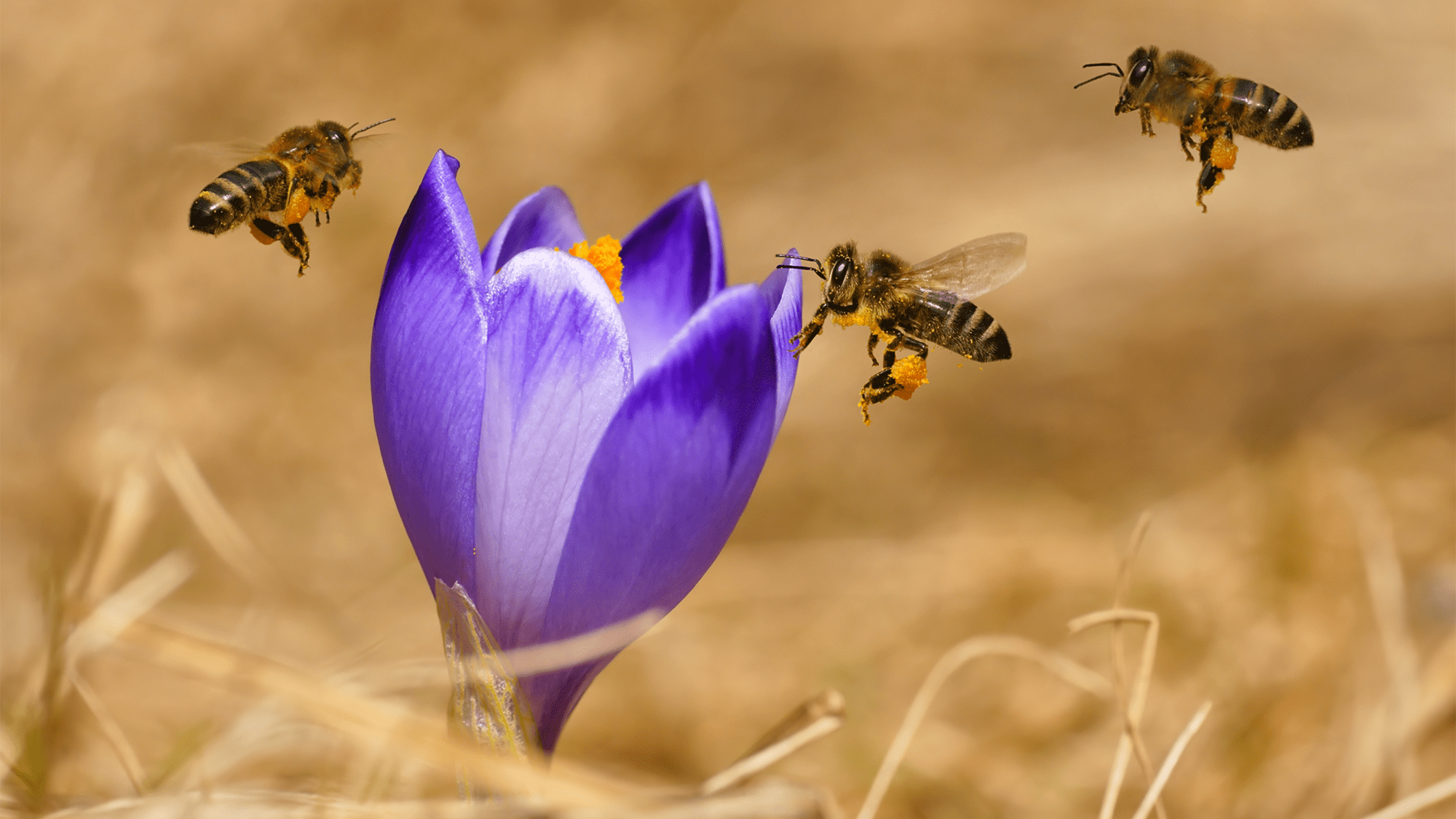

When humans first took to the skies in airplanes–long before GPS–they used roads, railways, buildings, and other linear landmarks on the ground to navigate. The method appears in nature as well. Honeybees use dominant elements in the landscape to find their way home, according to the results of a study published March 6 in the journal Frontiers in Behavioral Neuroscience.
As expert travelers, honeybees are known to use the sun, their sense of smell, and changes in polarized light in the sky to navigate as they fly. They even use the tiny hairs on their bodies to sense a flowers’ electric field. This new study takes a deeper look at the role that memory of specific visual cues plays in their navigation.
[Related: Male wasps use their genital spines to sting frogs (and people).]
“Here we show that honeybees use a ‘navigation memory’, a kind of mental map of the area that they know, to guide their search flights when they look for their hive starting in a new, unexplored area,” Randolf Menzel, a neurobiologist from Free University of Berlin in Germany and study co-author, said in a statement. “Linear landscape elements, such as water channels, roads, and field edges, appear to be important components of this navigation memory.”
Menzel and his team caught 50 experienced forager honeybees in 2010 and 2011. In unfamiliar territory, these bees fly in exploratory loops in different directions and distances that are centered from where they were released. The team used radar to track each bee’s exploratory flight pattern for between 20 minutes and three hours.
The bees were from colonies located in five different home areas and were tested in one common area to see how each group responded to differences in landmarks. The most notable linear landmarks were two parallel irrigation channels that ran northeast and southwest. The test area didn’t include any other landmarks that honeybees are known to use to navigate, such as structured horizons, or vertical elements that stand out like trees or plants. Next, the team glued a tiny transponder on the bees’ backs and released them in a test area that was too far away from their home hives for them to already be familiar with. They then used a radar that could detect the transponders at a distance of up to 2,952 feet in the test area.

The team then used software to simulate two sets of the bees’ seemingly random flight patterns observed in the experiment, centered on the release spot. These paths generated different algorithms. Since these observed flight patterns were very different, the researchers concluded that the honeybees weren’t simply conducting random search flights, but instead had more purpose and direction.
[Related: A swarm of honeybees can have the same electrical charge as a storm cloud.]
They then analyzed the orientation of the search flights and how often the bees flew over each 100 x 100 meter block within the test area using advanced statistics. The models showed that the honeybees tended to spend a disproportionate amount of time flying alongside the irrigation channels.
Deeper analysis showed that the channels continued to guide the bees’ exploratory flights even when the bees were more than 98 feet away from the channels, which is the furthest distance the honeybees can see linear landscape elements such as these. The team theorizes that this implies that the bees kept the landmarks in their memory for prolonged periods of time.
“Our data show that similarities and differences in the layout of the linear landscape elements between their home area and the new area are used by the bees to explore where their hive might be,” said Menzel.
According to the study, the results suggest that the bees can retain a navigational memory of their home territory based on landmarks and then try to generalize what they saw in the test area to find their way home. This behavior is also found in bats and birds–and now, honeybees.
